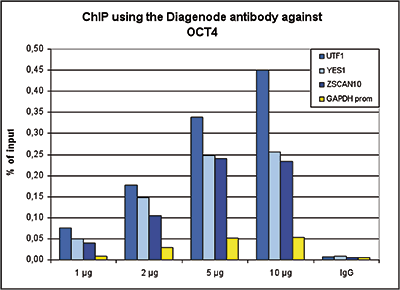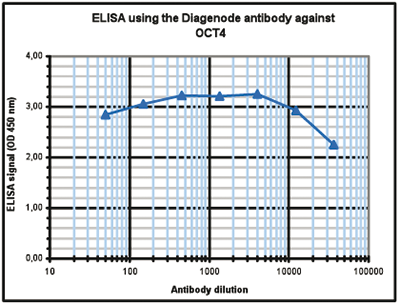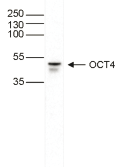OCT4 (UniProtKB/Swiss-Prot entry Q01860) is a transcription factor that plays a key role in embryonic development and stem cell pluripotency. During embryonic development OCT4 forms a trimeric complex with SOX2 and controls the expression of a number of genes important for embryogenesis such as YES1, FGF4, UTF1 and ZFP206. Aberrant expression of OCT4 in adult tissues is associated with tumorigenesis. A translocation with the Ewing’s sarcoma gene on chromosome 21 also leads to tumor formation.






